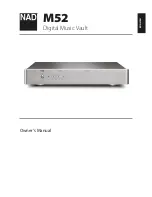
6. GENERAL MAINTENANCE AND ADJUSTMENTS
Page 125
© 2005 DH Instruments, Inc.
The piston assembly ( piston head + adjusting mass + piston cap +
piston cap retaining screw) is part of the mass load. Its mass has been
measured and is reported in the calibration report. Use caution when
handling these parts, to avoid changing their mass by swapping parts,
contaminating them or leaving parts out in reassembly. Out of tolerance
pressure definitions could result.
Figure 53.
10 kPa/kg gas
piston-cylinder module, expanded view
To disassemble the piston-cylinder module it
must first be removed from the PG7601
Platform (see Section 6.6.1)
Place the piston-cylinder module upside down
on a clean stable surface (piston cap (2) down).
Using the sleeve nut tool (see
Figure 55
),
remove the sleeve nut (9). The sleeve nut tool is
a spanner that fits into the two holes on the
sleeve nut.
The 10 kPa/kg sleeve nut has a left hand
thread so it is loosened by turning it
clockwise.
Remove the O-ring assembly (8). Then, being
sure to support the cylinder (7) so it doesn’t fall
out, turn over the remaining assembly so that
the piston cap (2) is up.
While firmly holding down the cap (2), use a 5 mm
Allen tool, to loosen the socket head cap
retaining screw (1). The cap retaining screw
will not fully disengage from the piston cap due
to the adjustment mass (3). Gently remove the
cap and screw from the assembly.
When installing the piston cap during
reassembly, remember to reinstall the
adjustment mass (3).
Remove the main module housing (4) by
sliding it upward leaving the piston-cylinder
assembly behind.
Reinstall the piston cap (2) directly onto the
piston head (5).
Place the 10 kPa/kg piston insertion tool (see
Figure 54
) on the work surface with the large
diameter down.
Holding the cylinder (7) to prevent it from falling
out, place the piston-cylinder assembly onto the
tool sliding the hollowed end of the piston (6)
onto the tool shaft. Carefully allow the cylinder
to drop down over the large diameter of the tool.
Holding the cylinder, gently remove the piston
(6) from the tool. Finally, remove the tool from
the cylinder.
When reassembling, lubricate the piston-
cylinder module parts following the
instructions in Section 6.6.3.3..
The orientation of the piston on the
cylinder is important. The end of the
cylinder that is marked with the serial
number should go into the sleeve and/or
main module housing first. The piston
enters the end of the cylinder that is
marked with the serial number. Installing
the cylinder with the wrong orientation
may lead to out of tolerance measurements.
Summary of Contents for ADCS-601
Page 10: ...ADCS 601 OPERATION AND MAINTENANCE MANUAL 2005 DH Instruments Inc Page VIII N NO OT TE ES S ...
Page 12: ...ADCS 601 OPERATION AND MAINTENANCE MANUAL 2005 DH Instruments Inc Page X N NO OT TE ES S ...
Page 19: ...2 SYSTEM OVERVIEW Page 7 2005 DH Instruments Inc Figure 2 ADCS 601 system pneumatic schematic ...
Page 114: ...ADCS 601 OPERATION AND MAINTENANCE MANUAL 2005 DH Instruments Inc Page 102 N NO OT TE ES S ...
Page 116: ...ADCS 601 OPERATION AND MAINTENANCE MANUAL 2005 DH Instruments Inc Page 104 N NO OT TE ES S ...
Page 146: ...ADCS 601 OPERATION AND MAINTENANCE MANUAL 2005 DH Instruments Inc Page 134 N NO OT TE ES S ...
Page 168: ...ADCS 601 OPERATION AND MAINTENANCE MANUAL 2005 DH Instruments Inc Page 156 N NO OT TE ES S ...
Page 174: ...ADCS 601 OPERATION AND MAINTENANCE MANUAL 2005 DH Instruments Inc Page 162 N NO OT TE ES S ...
















































